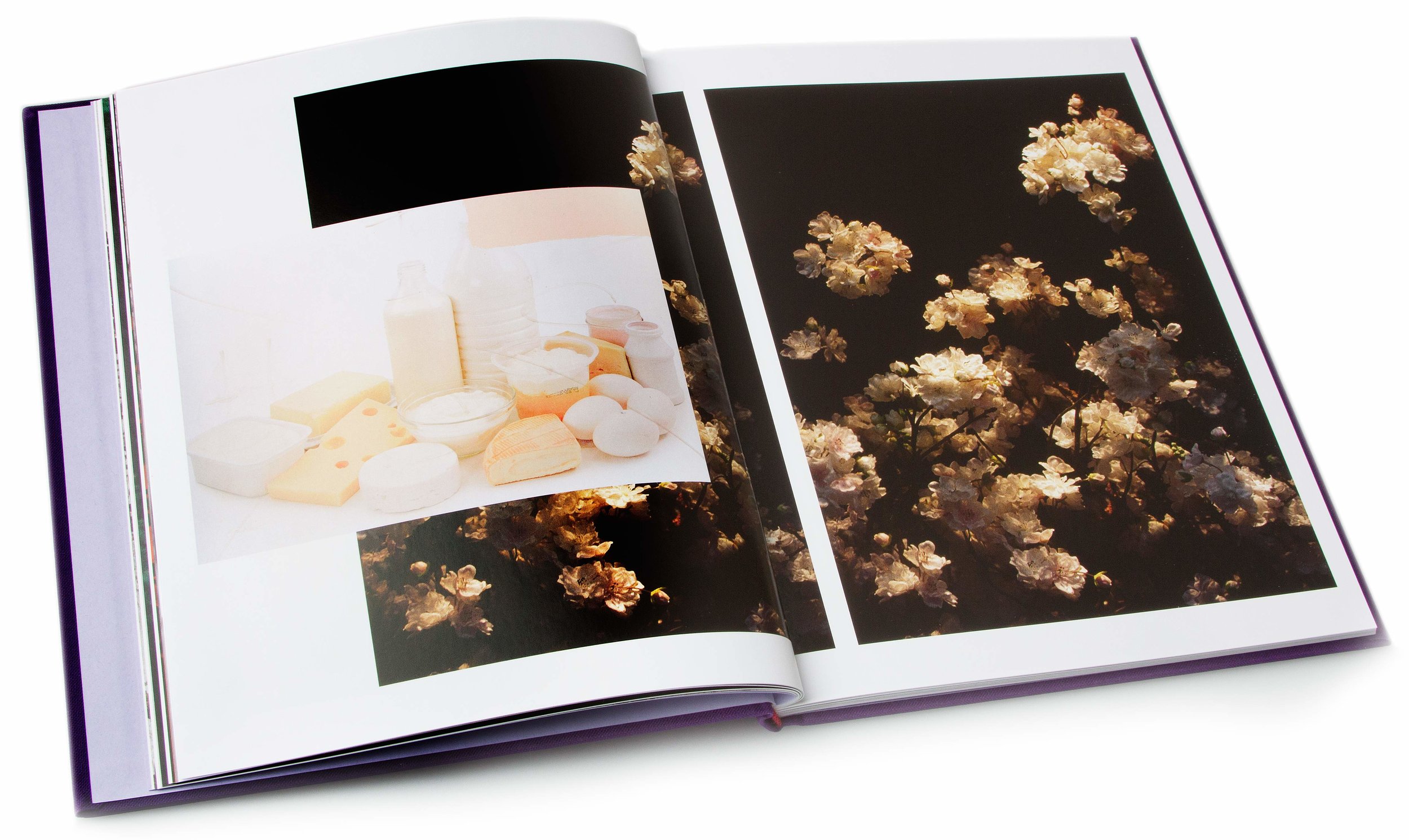Will Douglas
Will Douglas
Flat Pictures (You Can Feel)
7″ x 9″
96 pages
Perfect Bound
Edition Size 200
Published by Aint–Bad
From the artist:
FLAT PICTURES (YOU CAN FEEL) consists of photographs made in response to the ways in which spontaneous screen-based collage influences and complicates our perception of the 3-dimensional world. Douglas photographs video monitors and commercial displays, appropriates imagery, and flattens experiences while considering photography and its construction through consumerism, belief systems, masculinity, and failure. These approaches meet at the intersection of object making, photograph taking, and spatial arranging, which vacillates between 2- and 3-dimensional spaces.
FP(YCF) explores how this approach influences and complicates our reception of often delicate or violent content. The imagery addresses the poetic power of indirect associations as a gateway to themes of visual confusion and the physical experience of viewing an image. This method of working is heavily influenced by the graphic nature of the internet. By allowing the photographic language to speak, not only through the lens but also through the object, Douglas hopes to broaden the conversation around the reception of images.
Grab a copy of the book here
Book review by Charlotte Irwin |
Before you even look at the images, the title of this photobook focuses the mind on texture, dimensions, and touch. It’s a title that guarantees both disappointment and success, depending on how lenient you are feeling towards Will Douglas’s wordplay, and later image-play.
On first glance and touch, you can accept that the pictures are literally flat, flush to the page. But also they are in some ways not, this is a book after all. You have to touch it to reveal the narrative. You can literally feel them. But it gets more interesting when you ask yourself what Douglas is making you look at, and what is he trying to make you feel?
There is texture in the subject matter. A double-page spread of paper money, splayed out and enlarged, dominates, leaving your eye to search for the relief where you can pick up your cash, but the texture is a game, and the only real edge is at the corner of the page. This is fake money.
This collage, and others, sits among straight photographs that evoke senses beyond the eye: a plant growing near a jagged wall contrasts hard and soft and suggests smell, touch; a bull and the matador about to wave the red flag evokes violence, the breeze of movement, the pregnant feeling of anxious anticipation. In contrasting ways Douglas exposes the viscerality of our world, tempting us to imagine beyond what the ‘flat pictures’ offer in both reality, and in the internal world of our minds.
One particular image is more obviously playful. Video monitors – the flattener of 3D experience – themselves become 2D in a mise-en-abyme that demands you consider what it is to create and view an image. While the photograph of a stained glass window, broken at the top, draws attention to both the glass and its depictions, and the world behind. But for Douglas there is another consideration, the image in your hand, and this scene as a whole. It's a kind of triptych in form, and it's clever.
And this seems to be the thrust of these collages whether naturally presented to the photographer or created after the fact, as with both approaches Douglas makes us question reality and how it fits together. This curious, careful series makes you wonder about the complexities of how we exist, exposing the layers, and creating new angles. It leaves me asking myself how much can we feel what we see, and then how much of what we feel do we see? The answer changes, but Douglas's images act as a beautiful focal point to ponder it.
Grab a copy of the book here








